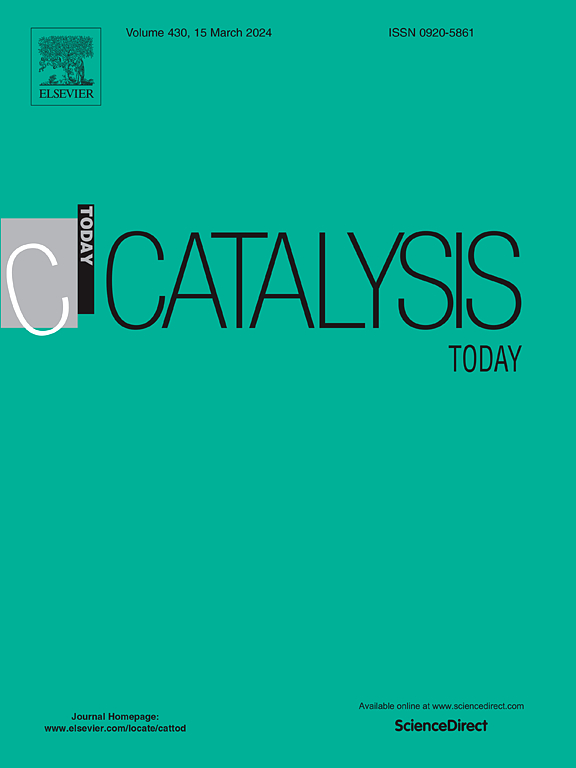Photoelectrocatalytic advanced oxidation of perfluoroalkyl substances in groundwaters of the Veneto Region, Italy
IF 5.2
2区 化学
Q1 CHEMISTRY, APPLIED
引用次数: 0
Abstract
Photoelectrocatalysis (PEC) was applied for the degradation of PFASs in natural groundwater collected from two wells located in the Veneto Region (Italy) where a massive contamination of the aquifer was discovered. Out of 48 monitored species, up to 9 PFASs were detected. On average, the degradation rate followed the order: PFOA>PFHpA>PFHxA≈PFPeA>PFBA and PFOS>PFHpS; the concentration of PFBS and PFHxS did not change during the tests. The overall PFASs concentration decreased by 63 % in well 1 and by 65 % in well 2. PEC tests of PFOA solutions ([PFOA] = 2 μg/l; [K2SO4] = 4 mM] induced the transient formation of PFHpA, followed by PFHxA, PFPeA and PFBA, confirming the reaction pathway consisting of decarboxylation followed by a stepwise losing of CF2 units, transiently forming shorter chain intermediates. PEC efficiency was compared to photolysis. According to electrical energy per order of magnitude, PEC outperforms conventional photolysis and most of the other advanced oxidation processes reported in literature.
意大利威尼托地区地下水中全氟烷基物质的光电催化深度氧化
采用光电催化(PEC)技术对意大利威尼托地区发现大量含水层污染的两口井采集的天然地下水中的全氟磺酸进行了降解。在48种监测物种中,检测到9种PFASs。平均降解速率顺序为:PFOA>;PFHpA>PFHxA≈PFPeA>;PFBA和PFOS>;PFHpS;PFBS和PFHxS的浓度在试验过程中没有变化。在井1和井2中,PFASs的总浓度分别下降了63 %和65 %。PFOA溶液([PFOA] = 2 μg/l;[K2SO4] = 4 mM]诱导瞬时生成PFHpA,随后是PFHxA、PFPeA和PFBA,证实了该反应途径是脱羧- CF2单元逐步丢失,瞬时生成短链中间体。将PEC效率与光解效率进行了比较。根据每数量级的电能,PEC优于传统的光解和文献中报道的大多数其他高级氧化过程。
本文章由计算机程序翻译,如有差异,请以英文原文为准。
求助全文
约1分钟内获得全文
求助全文
来源期刊

Catalysis Today
化学-工程:化工
CiteScore
11.50
自引率
3.80%
发文量
573
审稿时长
2.9 months
期刊介绍:
Catalysis Today focuses on the rapid publication of original invited papers devoted to currently important topics in catalysis and related subjects. The journal only publishes special issues (Proposing a Catalysis Today Special Issue), each of which is supervised by Guest Editors who recruit individual papers and oversee the peer review process. Catalysis Today offers researchers in the field of catalysis in-depth overviews of topical issues.
Both fundamental and applied aspects of catalysis are covered. Subjects such as catalysis of immobilized organometallic and biocatalytic systems are welcome. Subjects related to catalysis such as experimental techniques, adsorption, process technology, synthesis, in situ characterization, computational, theoretical modeling, imaging and others are included if there is a clear relationship to catalysis.
 求助内容:
求助内容: 应助结果提醒方式:
应助结果提醒方式:


